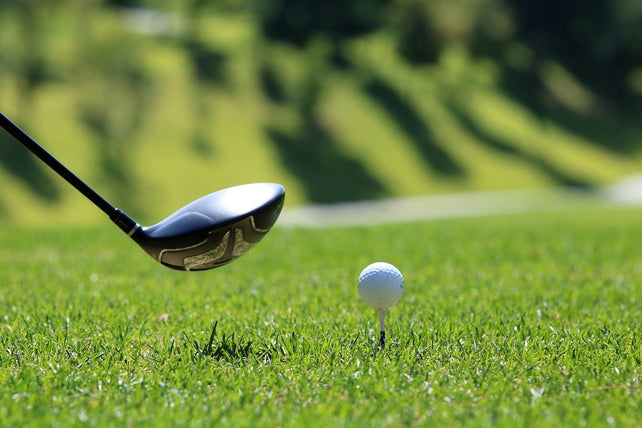What Is Ball Speed in Golf: Breaking Down the Data
Aug 21, 2019
With amazingly precise portable launch monitors fast becoming part of everyone’s golf bag, today’s players have a wealth of information at their fingertips. Anyone looking to refine their swing has a number of data points to choose from and a number of places to start.
One such data point that many overlook is golf ball speed. In this article, we’ll go into exactly what ball speed is, how to interpret the data, and how it can help you to become a better player.
What Is Ball Speed?
Ball speed is a measure of how fast your ball leaves the club head after impact. Ball speed is the main component in generating distance, and it comes from a combination of factors, including your club speed, the selected club, and the quality of the impact.
How Is Ball Speed Calculated?
In high-end launch monitors, ball speed is calculated in a split second as it leaves the club impact. Like any other calculation of velocity, it’s a simple formula of distance over time. However, due to the incredibly small distances and time intervals involved, these measurements need to be very precise to ensure that the calculation provides an accurate result.
The reason that accurate results are necessary is that the ball speed is also used in a number of other important calculations and indicators for your game. It’s used in determining the final carry distance, for example, as well as the smash factor, which is another interesting metric that we’ll discuss below.
The Relationship Between Ball Speed and Distance
To put it simply, the faster your ball is off the head, the farther it’ll go on the course. As a rough approximation, every mile per hour extra of ball speed equates to two extra yards of carry.
Of course, there are a number of other factors that influence exactly how far a ball will carry, including atmospheric conditions on the course, the launch angle, where the ball was hit, and more. However, if these are already factored into your shot and you’re still not getting the yardage you’d like, examining your ball speed is a great idea.
How Your Ball Speed Compares
When you’re looking at your own ball speed data, the first thing you’ll want to determine is how you compare to other golfers. This will give you a good idea of where you stand and give you a target for improvement.
The current Guinness World Record for fastest golf ball speed from a driver is 217.1 mph, achieved in 2013 by Ryan Winther, although there have been reports of speeds of up to 227 mph by him and other golfers. Don’t worry if you’re not reaching those numbers! More realistic average golf ball speeds are:
-
Amateur golfers (Driver ball speed)
- Male with handicap of 5: 147mph
- Average male: 133mph
- Female with handicap of 5: 125mph
- Average female: 111mph
-
PGA Tour golfers
- Driver: 167mph
- 3 Iron: 142mph
- 6 Iron: 127mph
- Pitching Wedge: 102mph
Again, if you’re not reaching these numbers, don’t lose heart. In the next section, we’ll tell you why you might not be getting your desired ball speed and what you can do about it.

What Ball Speed Tells You About Your Swing
Ball speed is closely tied to the speed of the club head as you swing. If you swing with more strength and move the head faster at impact, the ball should go faster.
However, it’s not quite as simple as that. It’s not just about the speed and power of the club head, but also the way that power is transferred to the ball during impact, otherwise known as the “smash factor.” The smash factor is the ratio of your club head speed to ball speed and, therefore, a measure of how efficient—or how “clean”—the impact was.
In other words, if you strike the ball cleanly and in the middle of the head, the head speed will translate almost directly into ball speed. If you hit the ball on the toe or heel of the head, or slice or loft the shot, the power transfer will be inefficient, and you’ll get less ball speed even though the club speed was the same.
This means your ball speed tells you a lot about your overall swing. If your swing is inefficient, and you’re doing something that results in even a minor miss-hit of the ball, you’ll instantly notice a difference in the ball speed. Conversely, as your swing improves, you’ll see your ball speed rise and you’ll be able to easily chart your progress.
In particular, the parts of your swing you should be focusing on are:
- Keeping an even tempo from backswing to the top of the swing, all the way down to impact
- Not forcing the club too hard and keeping movements fluid
- Your arm positioning and straightness, and how it relates to impact accuracy
- The follow-through, which is a key part of the transfer of power at impact
Using a Launch Monitor to Find Your Ball Speed
Launch monitors are, by far, the easiest and most accurate way to gauge your ball speed, but finding the actual figure and getting a truly precise reading depends on which launch monitor you’re using. Some of the more economical brands—the pocket-sized monitors which retail for under $500—don’t measure or calculate ball speed, instead only giving you your carry distance and club head speed. It’s worthwhile checking which data points are available to you before you invest.
For the sub-$500 launch monitors that do provide ball speed readings, you’ll be able to check your results via the supplied app. The high-end launch monitors provide a number of ways of accessing your ball speed: via an app, a connected golf simulator, or on the unit itself.

If accurate golf ball speed readings are a priority for your game, however, you should be aware of how your choice of launch monitor affects the reliability of the reading. Particularly:
- Whether it uses radar or cameras – Almost all launch monitors that use radar are situated behind the ball. This makes it more difficult to get accurate results from the point of impact, as the club head will obscure the ball at first. Camera-based systems are much more accurate, being side on and able to picture both club head and ball at impact, as well as easily distinguish between them.
- Where it’s positioned – Many launch monitors, particularly radar trackers at the lower end of the market, require the monitor to be placed at exactly the right distance from the tee before you swing. If you’re even an inch or two off, you’ll get unreliable results.
- The algorithms it’s using – The best launch monitors have countless years of algorithmic research behind their tracking systems, ensuring that everything from climate to pitch is accounted for when measuring ball speed. Other models might provide a result that’s reasonable, but these are not accurate enough to provide worthwhile training feedback.
Real Improvement Starts with the Right Data
There’s no doubt that measuring ball speed is an integral part of improvement on the course, but, unless you’re getting accurate data, you won’t be able to reach for—and achieve—your training goals with confidence.
Make sure you’re getting the right data with Foresight Sports’ range of cutting-edge launch monitors. Using high-speed stereoscopic and quadroscopic camera systems and advanced algorithms, the GC2, GCQuad, and GCHawk are world leaders for incredibly precise swing analysis.
For results you can trust, and the perfect base for real improvement, you need Foresight Sports. Contact us today at (858) 880-0179 to discuss your goals.




































